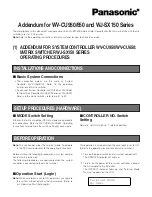
30
Basisanwendungen
8. Basic applications
The Web-IO has a wide range of different communication channels and
supports various standard protocols. We recommend that you only enable the
communication channels that are actually required for your application. This limits
the possibility of unauthorized access and manipulation.
First of all, we would like to introduce the three most frequently used
communication channels:
Browser access
Access via a web browser has the special feature that, in addition to monitoring and
operating the IOs, the configuration of the Web IO is also handled in this way if the
user logs in accordingly:
Without login
only the states of inputs and outputs can be observed.
With
User login
all settings and actions related to the IOs can be adjusted.
With
Administrator login
the entire configuration of the Web-IO can be acessed.
HTTP or HTTPS
Browser access for HTTP via port 80 is enabled by default. To change access to
HTTPS or to change the port, select
Basic settings >> Network
in the navigation tree
and then
Protocol
under
Access for Web services
. All other settings applicable in the
browser can be made under
Web sites
.
Hide menu tree
When the configuration is complete, the display in the browser can be reduced to IO
access. To do this, the option
Hide menu tree
must be activated under
Web pages
» Browser access
. Via
http://<URL/IP of the Web-IO>/index
the menu tree can be
shown temporarily and can be switched on again permanently via the option above.
IO access
For the access to the inputs, counters and outputs the Web-IO offers two prepared
web pages:
















































